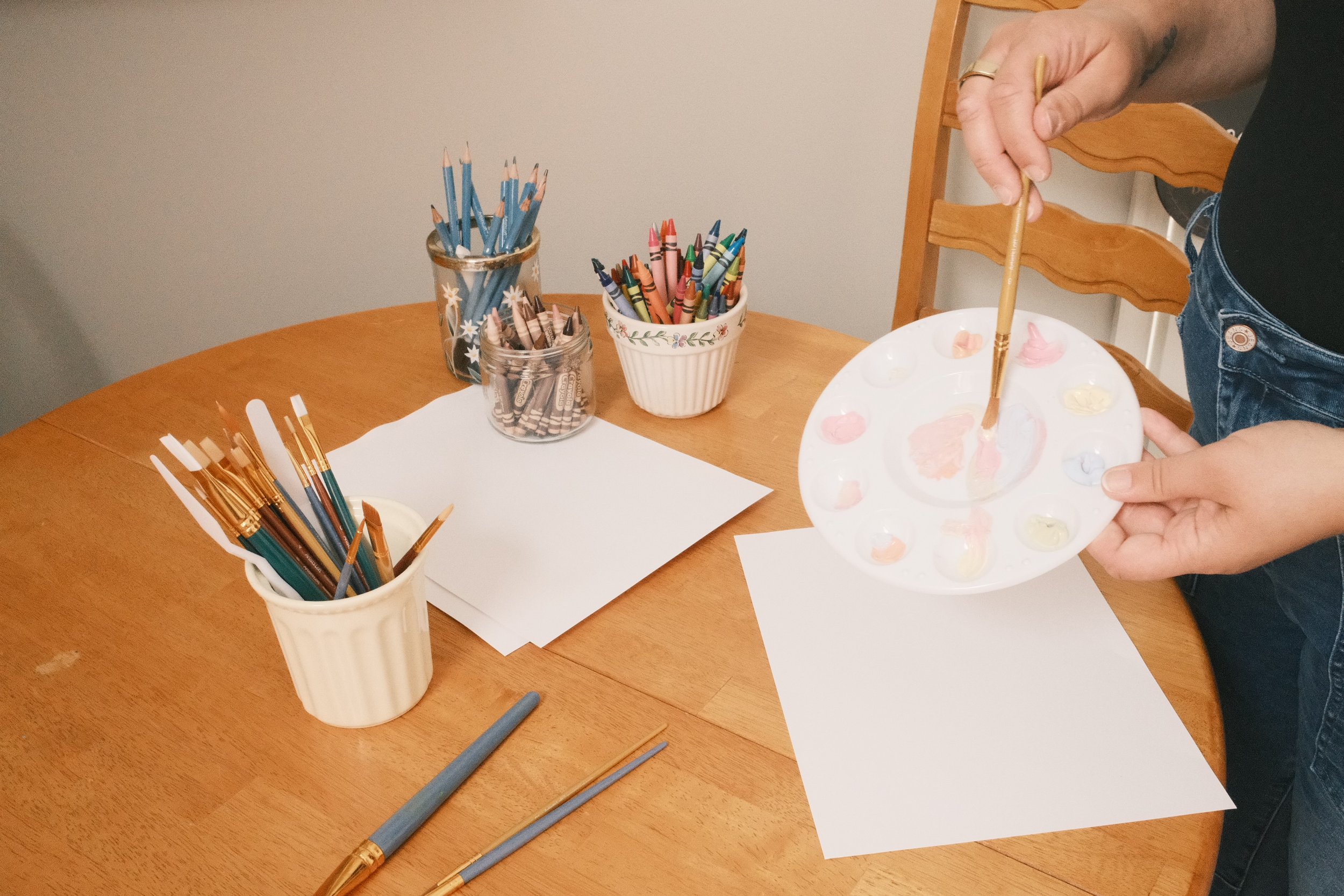Art Therapy | Expressive Therapy for Healing and Growth
Relieve anxiety and trauma with creativity in Dublin, Pa.
Art therapy is a trauma-informed practice that helps adults explore emotions, experiences, and stress in ways that feel safe, respectful, and empowering. Offered in Dublin, PA, art therapy provides an alternative path to healing when traditional talk therapy feels overwhelming or limiting.
In art therapy, creative materials such as drawing, painting, and collage are used as tools for self-expression and emotional regulation. No artistic skill is needed — the focus is on your experience, not the artwork itself. Sessions are guided at your pace, with an emphasis on choice, consent, and nervous system safety.
As a trained art therapist serving adults in Dublin and surrounding Bucks County, I offer a supportive, non-judgmental space for individuals navigating trauma, anxiety, depression, burnout, grief, and major life transitions. Art therapy can help adults reconnect with themselves, develop coping strategies, increase emotional awareness, and gently process past experiences.
Let's Get Creative
〰️
Let's Get Creative 〰️
How can Art Therapy help me?
-
Art therapy provides a non-verbal outlet for expressing complex emotions. When words are difficult, creating art allows individuals to convey feelings through colors, shapes, and textures. This can be especially helpful for those who struggle to articulate their anxiety or fear.
-
The process of creating art can be inherently calming and meditative. Engaging in artistic activities helps shift focus away from anxious thoughts and provides a form of relaxation. The repetitive nature of some artistic processes can also induce a state of mindfulness, reducing overall stress.
-
Art therapy encourages exploration of inner thoughts and feelings. By creating visual representations of their experiences, individuals may gain insights into their anxiety triggers and patterns. This heightened self-awareness can facilitate understanding and coping strategies.
-
For those whose anxiety stems from past trauma, art therapy offers a safe space to explore and process these experiences. Through symbolic representation, individuals can confront and make sense of their trauma in a controlled and less intimidating way.
-
Art therapy can help individuals develop coping mechanisms by experimenting with different artistic techniques and materials. This process can teach patience, problem-solving, and resilience, which are valuable skills in managing anxiety.
-
Creating art requires focus and concentration, which can divert attention from anxious thoughts and provide a sense of control. As individuals become more engaged in their art, they may find it easier to regulate their emotions and manage anxiety.
-
Completing an art project can foster a sense of accomplishment and self-worth. For individuals struggling with anxiety, this can be a significant boost to their self-esteem and confidence, helping them feel more capable in other areas of their life.
-
Art therapy often involves group sessions, providing an opportunity for individuals to connect with others who may have similar experiences. This sense of community can reduce feelings of isolation and support emotional healing.
-
Art therapy incorporates mindfulness practices, such as focusing on the present moment and the act of creating. This can help break the cycle of rumination that often accompanies anxiety and promote a sense of calm.
Overall, art therapy’s ability to engage the mind in a creative and reflective process offers a valuable complement to conventional treatments for anxiety, supporting emotional healing and personal growth.
What does an Art Therapy Session look like?
1
We will start session with a check-in, discussing anything that has come up since the last session, or even discuss your therapeutic goals together for the long-term, or for this specific session.
The art-making part of the session can take up the bulk of the session, or sometimes art-making is brief and/or even skipped (and instead do verbal therapy) upon what you need.
2
If you choose to make art, I will provide you with material. You might choose to draw, paint, sculpt, or engage in any other creative process. Your therapist may provide prompts or themes, or encourage you to express themselves freely.
During the art-making, your therapist can be there to just witness your process, or even collaborate or make art together. And the art-making process can look very silent, or quite talkative, depending on the session.
3
Once you have created your art we will take time to process what you created. You make meaning out of what you create. Your therapist will not analyze your art, but listened to what you see. Your therapist will ask your thoughts or feelings that came up during the process, and what the artwork might symbolize or reveal about your inner world.
Your therapist will help you process the insights gained from the artwork. This may involve exploring how the themes in the artwork relate to your life, emotions, or experiences. The goal is to integrate these insights into a broader understanding of the your issues or experiences.

“If you hear a voice within you say ‘You cannot paint’, then by all means paint, and that voice will be silenced.”
– Vincent Van Gogh

